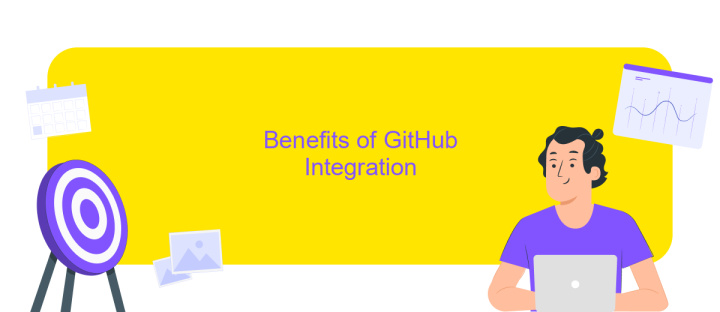Data Factory GitHub Integration
Data Factory GitHub Integration streamlines the data engineering workflow by connecting Azure Data Factory with GitHub repositories. This integration enables seamless version control, collaborative development, and automated deployment of data pipelines. By leveraging GitHub's robust features, data teams can enhance productivity, ensure code quality, and maintain a comprehensive history of changes, thereby optimizing their data management processes.
Introduction
Integrating Data Factory with GitHub allows for streamlined version control, collaboration, and deployment of data pipelines. This integration leverages GitHub's robust features to enhance the development lifecycle of data projects, ensuring efficient management and tracking of changes.
- Version Control: Track and manage changes to data pipelines with ease.
- Collaboration: Work seamlessly with team members on shared projects.
- Deployment: Automate the deployment process for data pipelines.
By integrating Data Factory with GitHub, organizations can achieve a higher level of efficiency and reliability in their data operations. This integration not only simplifies the development process but also provides a structured approach to managing data workflows, making it an essential tool for modern data engineering teams.
Integrating Data Factory with GitHub

Integrating Azure Data Factory with GitHub streamlines the process of managing and deploying data pipelines. By connecting Data Factory to a GitHub repository, you can version control your data workflows, collaborate with team members, and automate deployment processes. To begin, navigate to the Data Factory settings and select the Git Configuration tab. Enter your GitHub repository details, including the repository name, branch, and root folder. This setup allows you to sync changes between Data Factory and your GitHub repository seamlessly.
For an enhanced integration experience, consider using ApiX-Drive, a service designed to simplify and automate integrations. ApiX-Drive can facilitate the connection between Data Factory and GitHub by providing an intuitive interface and automated workflows. With ApiX-Drive, you can set up triggers and actions that synchronize your data pipelines with GitHub, ensuring that your data workflows are always up-to-date and properly versioned. This added layer of automation enhances efficiency and reduces the risk of manual errors.
Benefits of GitHub Integration

Integrating GitHub with Data Factory brings numerous advantages, enhancing the efficiency and reliability of data workflows. By leveraging the power of version control and collaborative features, teams can streamline their development processes and ensure consistency across all data pipelines.
- Version Control: GitHub integration allows for robust version control, ensuring that every change is tracked and can be reverted if necessary.
- Collaboration: Teams can collaborate seamlessly, with multiple users working on different parts of the data pipeline simultaneously without conflicts.
- Continuous Integration/Continuous Deployment (CI/CD): Automate the deployment of data pipelines, reducing manual errors and speeding up the release cycle.
- Security: Enhanced security features, such as branch protection and required reviews, help maintain the integrity of the codebase.
- Documentation: Automatically generated documentation and commit histories provide clear insights into the evolution of data workflows.
Incorporating GitHub into Data Factory not only boosts productivity but also ensures a structured and secure approach to managing data pipelines. This integration is essential for any team looking to optimize their data operations and maintain a high standard of quality and efficiency.
Use Cases of GitHub Integration

Integrating GitHub with Data Factory offers numerous advantages for data engineering and analytics teams. One of the primary use cases is version control, which allows teams to track changes, revert to previous versions, and collaborate efficiently on data pipeline development.
Another key use case is continuous integration and continuous deployment (CI/CD). By leveraging GitHub Actions, teams can automate the testing and deployment of data pipelines, ensuring that any changes are validated before being pushed to production. This reduces the risk of errors and improves the reliability of data workflows.
- Version Control: Track changes, collaborate, and revert to previous versions.
- CI/CD: Automate testing and deployment of data pipelines.
- Collaboration: Multiple team members can work on the same project simultaneously.
- Audit Trail: Maintain a history of changes for compliance and troubleshooting.
In summary, GitHub integration with Data Factory streamlines the development and management of data pipelines. It enhances collaboration, ensures robust version control, and supports automated workflows, making it an invaluable tool for modern data engineering teams.


Conclusion
Integrating GitHub with Data Factory offers a streamlined approach to managing your data pipelines and version control. By leveraging GitHub’s robust versioning capabilities, teams can collaborate more efficiently, track changes, and ensure the integrity of their data workflows. This integration not only enhances productivity but also provides a secure and reliable environment for data management.
For those looking to simplify the integration process, services like ApiX-Drive can be invaluable. ApiX-Drive allows for seamless connection between various platforms, reducing the complexity of manual setup and maintenance. With its user-friendly interface and automated workflows, ApiX-Drive ensures that your Data Factory and GitHub integration is both efficient and effective. In conclusion, utilizing such tools can significantly enhance your data management strategy, providing a more cohesive and automated solution.
FAQ
What is Data Factory GitHub Integration?
How do I set up GitHub integration in Azure Data Factory?
Can I automate the deployment of Data Factory pipelines using GitHub?
What are the benefits of using GitHub integration with Data Factory?
How can I resolve conflicts when multiple users edit the same Data Factory pipeline in GitHub?
Apix-Drive will help optimize business processes, save you from a lot of routine tasks and unnecessary costs for automation, attracting additional specialists. Try setting up a free test connection with ApiX-Drive and see for yourself. Now you have to think about where to invest the freed time and money!

